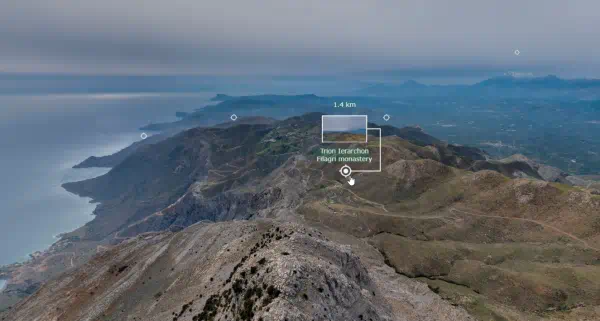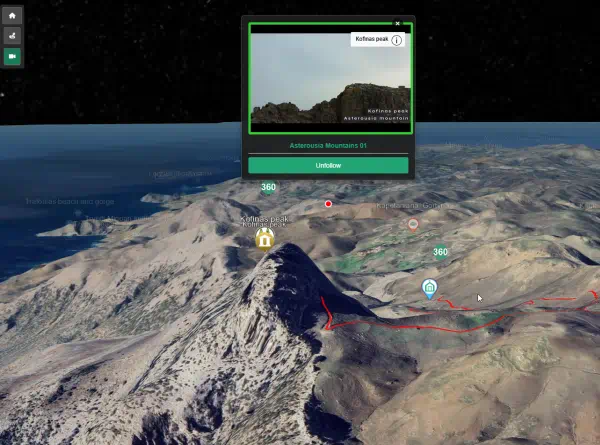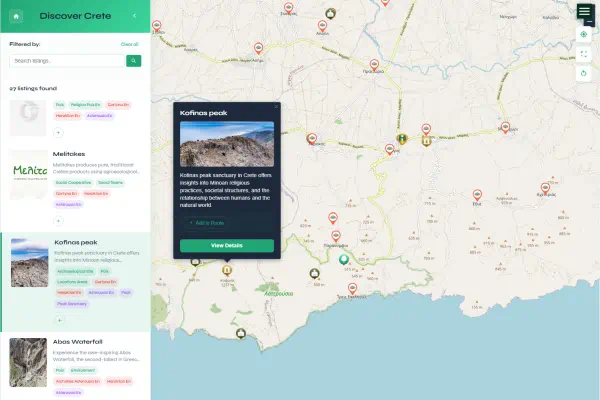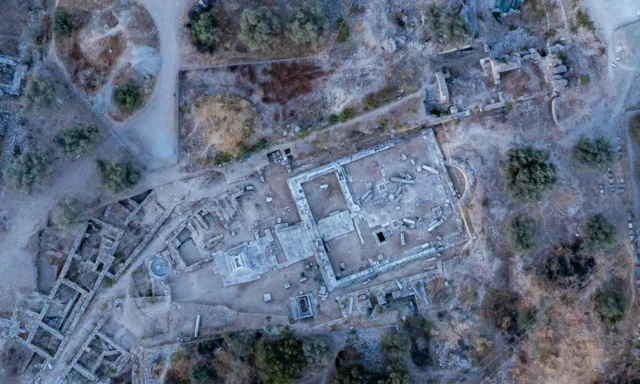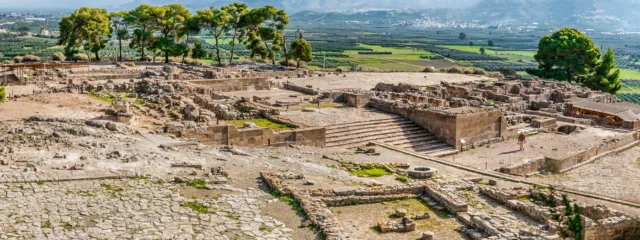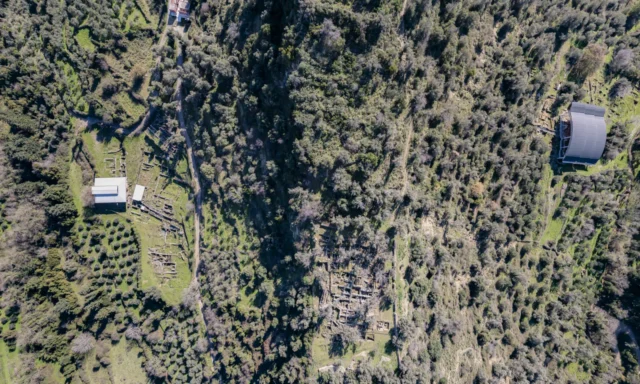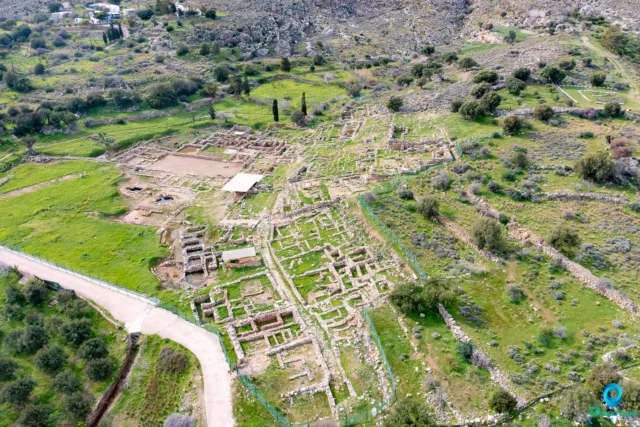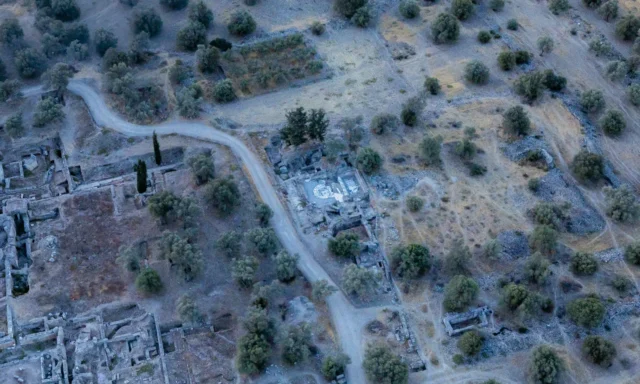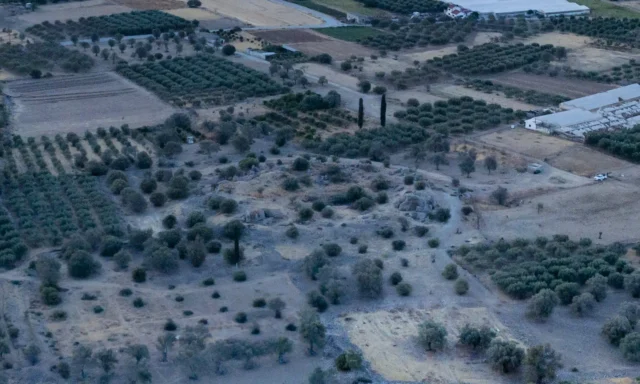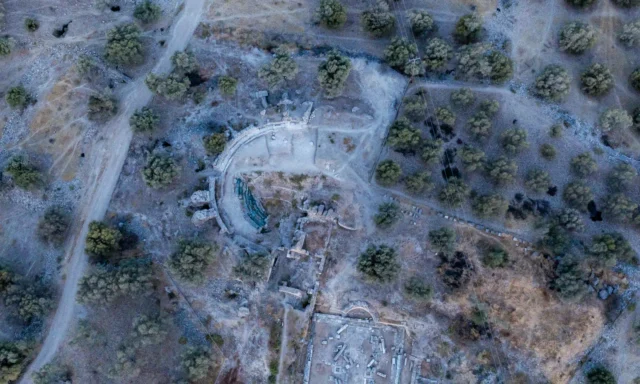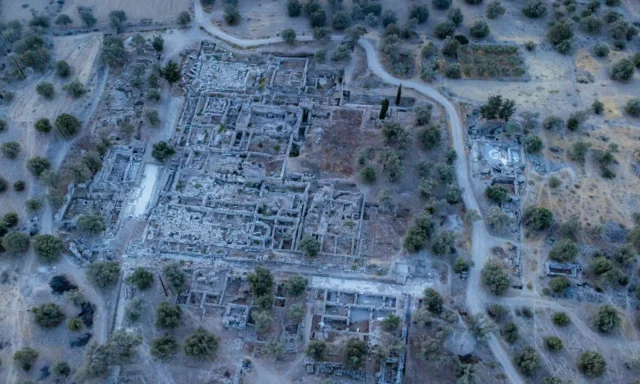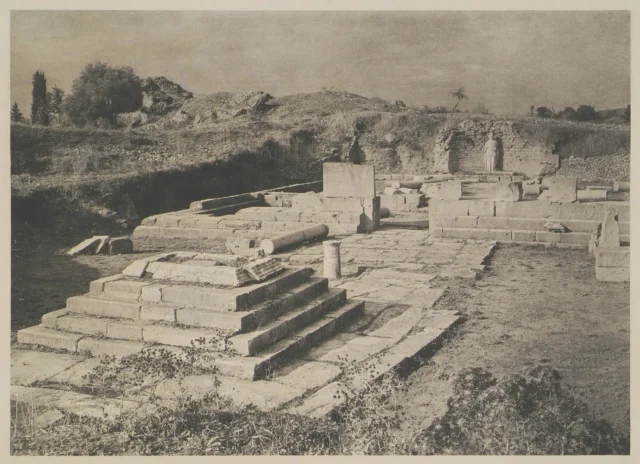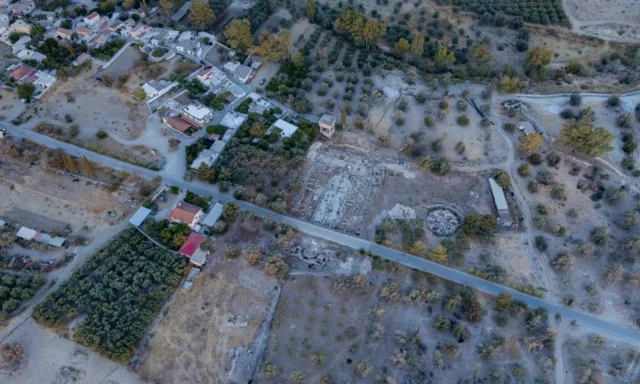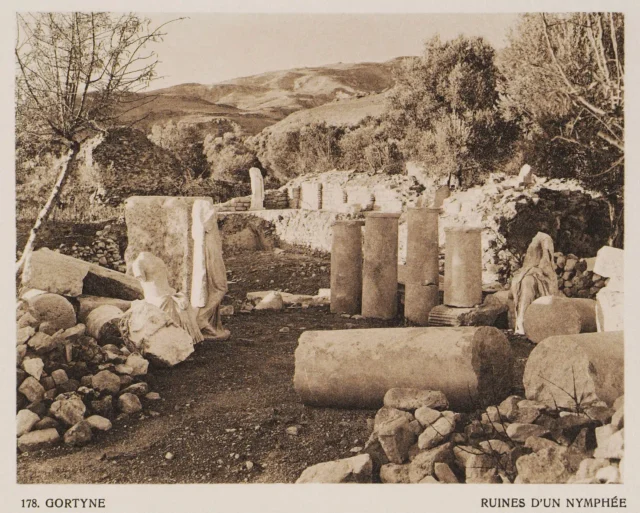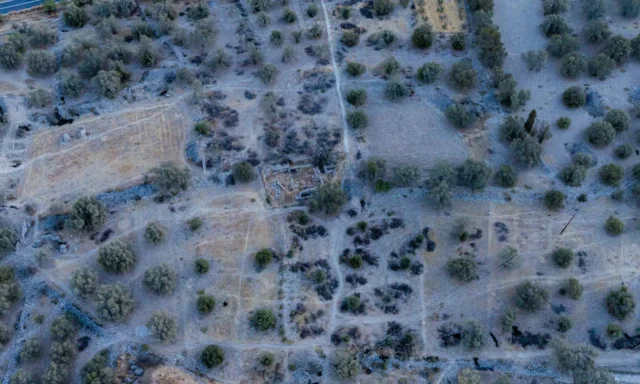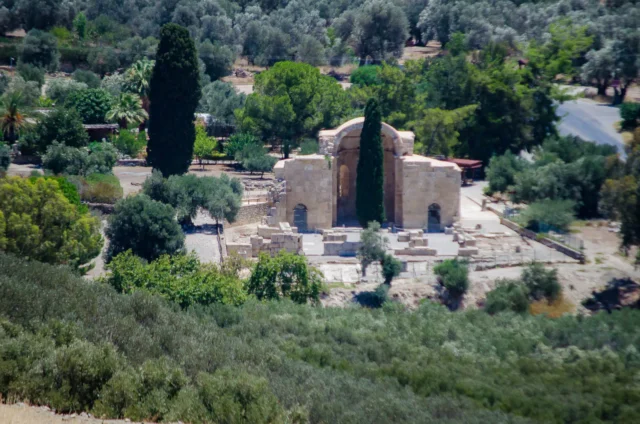The Megali Porta Thermae was a significant Roman bath complex situated in Gortyn, the provincial capital of Crete and Cyrenaica. Its substantial size and architectural features indicate its importance as a public facility within the city.
Location and Context
The Megali Porta Thermae was located at the southern boundary of Gortyn, in a specific area identified as Sector V. This placement on the city’s edge, along with other large public buildings like the theatre and amphitheatre, suggests Gortyn’s urban expansion during the Roman Imperial period. The bath complex was linked to the city’s extensive water supply system, with one of the main aqueduct branches, Branch C, reaching it at the southern edge of the site. Large cisterns, possibly for emergency water storage, were located adjacent to the Megali Porta baths, emphasizing their critical role in urban life. In later centuries, the area around Megali Porta, along with the Praetorium and the acropolis, remained areas of continued habitation, as evidenced by the concentration of cistern-fountains.
Construction and Architectural Features
The Megali Porta Baths are estimated to have covered a vast area of approximately 3,600 square meters. This scale makes it the largest bath complex in Gortyn. Its construction is attributed to the Hadrianic period, around the 2nd century CE, although some sources also suggest a date in the Antonine period. The emergence of baths as a new monument type in Crete, especially large ones like Megali Porta, indicates a significant shift in everyday life and visibly enhanced the status of the city. The extensive water requirements for such large baths necessitated a robust aqueduct system. By the 6th and 7th centuries CE, parts of the ancient baths at Megali Porta were reused for residential dwellings and craft-producing activities, as indicated by archaeological finds such as amphorae, pottery, and furnace rejects.
Twin Temple Buildings
In addition to the bath complex, the Megali Porta area also featured two twin temple buildings. These sacred structures were located in a rectangular area and seem to have been constructed contemporaneously with the bath complex. While their specific dedications are not detailed in the sources, their presence alongside a major public bath complex highlights the interconnectedness of religious and social activities in Roman Gortyn. This combined monumentalization would have significantly enhanced the prestige and cultural importance of the site.
Historical Significance
The construction of the Megali Porta Thermae, along with other public buildings, reflects a prosperous phase for Gortyn from the late Hellenistic period into the Roman Imperial period. The presence of such a large bath complex, particularly one matched with twin temples, underlines the city’s adoption of Roman architectural standards and lifestyle. It also signifies the city’s role as the provincial capital and a center of Roman influence on the island. The continuous refurbishment and improvements to Gortyn’s urban aqueduct system until the early 3rd century CE further supported monumental projects like the Megali Porta baths. The re-use of parts of the baths for residential and craft purposes in the 6th and 7th centuries CE illustrates the adaptive nature of urban spaces in Late Antiquity.
Archaeological Site: Key Points
- Extensive Area: The Megali Porta Baths covered approximately 3,600 square meters.
- Hadrianic/Antonine Period: Construction is dated to the Hadrianic or Antonine period, around the 2nd century CE.
- Southern Boundary: Located at the city’s southern limits.
- Aqueduct Connection: Served by a significant branch of the city’s aqueduct system.
- Later Re-use: Parts of the complex were re-used for dwellings and workshops in the 6th and 7th centuries CE.
- Basilica of Megali Porta: A Christian basilica (Basilica of Megali Porta) was later built in this area, utilizing a desecrated sanctuary near the baths, suggesting the transformation of public spaces over time.
Lippolis, Enzo. 2016. “Roman Gortyn: from Greek polis to provincial capital.” In Roman Crete: New Perspectives, edited by Jane E. Francis and Anna Kouremenos, 155-174. Oxford & Philadelphia: Oxbow Books.

